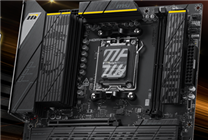Tachyum Unveils Groundbreaking 2nm Prodigy Chip: A Game Changer for Computing
Summary:
- Tachyum announces its revolutionary 2nm Prodigy chip, boasting up to 1024 cores and a clock speed of 6.0 GHz.
- The new chip aims to outperform NVIDIA’s upcoming Rubin Ultra platform in AI inference and general processing.
- Despite ambitious performance claims, the Prodigy project faces skepticism due to past delays and aggressive specifications.
On November 13, Tachyum, a pioneering company in general computing chips, unveiled its latest innovation: the 2nm Prodigy chip. This advancement is part of the Prodigy platform, which aims to redefine high-performance computing.
Impressive Specifications and Design
The 2nm Prodigy chip is designed to support up to 1024 cores, with a maximum frequency of 6.0 GHz. This positioning is significant as Tachyum claims that it will outstrip NVIDIA’s Rubin Ultra platform, which is scheduled for release in 2027, in terms of performance. The innovative chip features a 64-bit microarchitecture with an out-of-order execution design. This allows the chip to process eight instructions per clock cycle and supports the latest matrix and vector extensions.
Key Features of the Prodigy Chip:
- Core Configuration: Supports up to 1024 64-bit cores per socket.
- Cache Capacity: Features up to 1GB of L2 and L3 cache.
- Power Consumption: Designed with a thermal design power (TDP) of up to 1600W.
- Scalability: The architecture supports systems with up to 16 slots and a total of 8,192 CPU cores.
Advanced Capabilities
The Prodigy chip also supports 24 DDR5 channels, with a maximum speed of DDR5-17600 MT/s and single-slot capacity reaching up to 48TB. Furthermore, the integration of 128 PCIe 7.0 lanes is notable, marking a significant leap in connectivity options. It’s worth mentioning that DDR5-17600 and PCIe 7.0 are not widely adopted in the current server market, raising questions about the feasibility of Tachyum’s 2027 delivery timeline.
Ambitious Performance Claims
Tachyum does not shy away from asserting its competitive edge. The company claims that the Prodigy 2nm chip will deliver AI inference performance surpassing 1000 PFLOPs, compared to NVIDIA’s Rubin, which is predicted to achieve approximately 50 PFLOPs during the same time frame. Such claims position the Prodigy as a formidable contender in the AI and high-performance computing sectors.
Tachyum’s projections extend further, asserting that the performance of the Prodigy Ultimate will outpace NVIDIA’s Rubin Ultra by a factor of 21.3, while the Prodigy Premium will reportedly excel by 25.9 times the capabilities of NVIDIA’s offerings.
Potential Challenges Ahead
While Tachyum recently secured $220 million in investments and announced its readiness to initiate production of the 2nm chips, skepticism surrounds the ambitious performance figures. Many of these claims are currently categorized as "paper data." The Prodigy project has experienced multiple delays and significant modifications, casting doubt on the viability and timeline of such radical specifications.
Conclusion
Tachyum’s 2nm Prodigy chip showcases the pinnacle of modern chip design, with impressive specifications aimed at challenging established players like NVIDIA. However, the ambitious nature of these claims, coupled with the history of project delays, means that stakeholders should approach these developments with cautious optimism. As the chip industry continues to evolve, the landscape will undoubtedly be reshaped by innovations like Tachyum’s Prodigy, provided they can meet their projected timelines and performance metrics.










